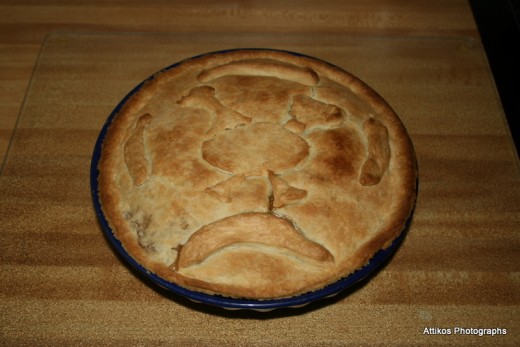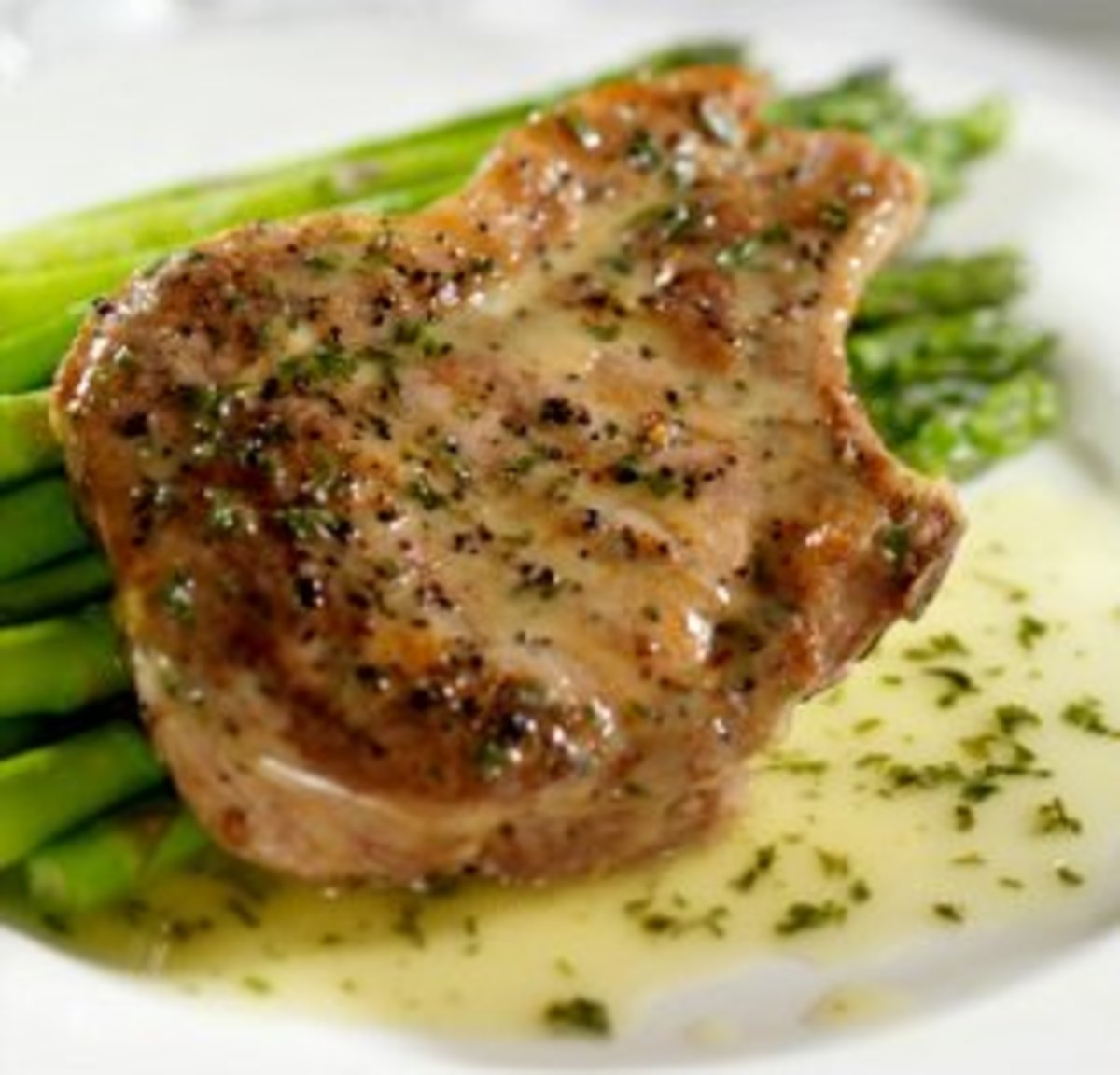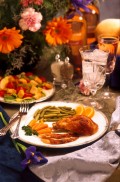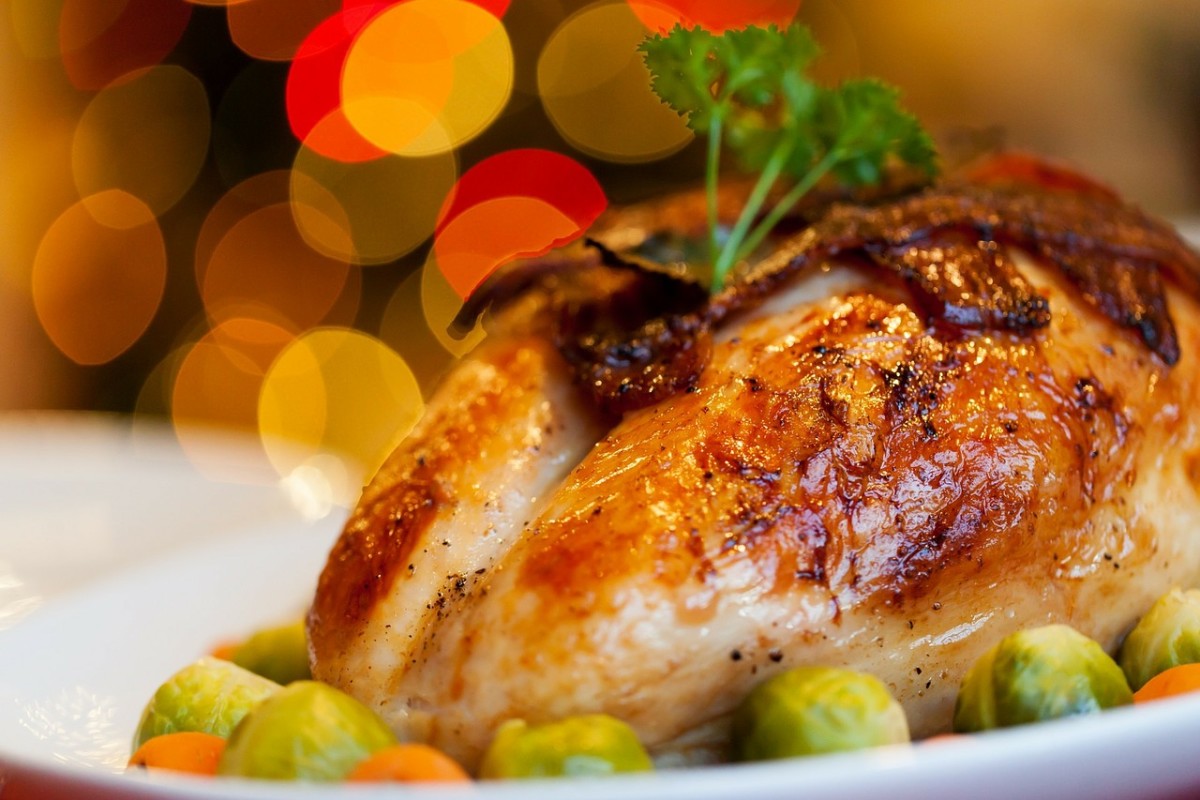Turkey Pot Pie

Pot Pie
Pot pies, savory concoctions of meat, vegetables and sauce in pastry, are as old as flour. The name, though, is primarily American, where by the time of the Revolution the tart had evolved into a frugal dish that could help stretch the thin resources of frontier life to feed a family. They were baked in deep, iron pots like Dutch ovens, hung on a hook over an open fire or placed on a grill or hearth over the coals. The pastry shell was there as a lining to prevent the taste of the iron from getting into the filling, and it was not usually served but given instead to the dogs and the hogs. Since it was not to be eaten by the family, that shell was made of just flour and water, with no fat or seasoning wasted in it. The purpose of the top crust, which was served and therefore made more generously, was to keep the pie from drying out as it baked. So it still does.
Today, both crusts are considered part of the dish, delectable parts in fact, and so both are made as savory pie pastry, usually with lard, vegetable shortening or butter. Iron is now rarely used as the cooking vessel. Ceramic, glass, stainless steel and aluminum have replaced it. I like to use the first of those. It better than the others holds and transmits heat more like the old iron pots did, yielding a ... well, a crustier crust, which is a good thing.
Earlier in the week, I had braised a frozen turkey breast in the slow cooker because I had little time to spend in one of my favorite activities, cooking. With only two of us and a dog living here, most of it was left over after the initial supper. The first night following I just made some gravy and warmed some up in it. Variety, however, is indeed the spice of life, the answer to the question of what to do next was a pot pie, and the result was this one, made using whatever I found in the freezer and refrigerator.
Ingredients
For the crust:
- two cups of flour
- half a cup (one stick) of butter
- one teaspoon of good (unadulterated) salt
- a few tablespoons of ice water
For the filling:
- three cups of cooked turkey, pulled into bite-sized pieces
- one quart of turkey stock (if you have none, you can use chicken stock)
- half a cup (one stick) of butter
- half a cup of flour
- one and a half cups of frozen peas
- one and a half cups of frozen corn kernels
- three ribs of celery, chopped
- one sprig of sage, minced
- one sprig of thyme
Make the Pastry
I like to use a food processor for pastry. You can use your hands, if you work quickly so as not to warm it up too much, or you can cut in the butter with a pair of knives, or a greens chopper. You can also use a pair of pie shells from the store, but they are not half as good, or as good for you, as your own, and you can make one in less time than it takes to go to the store to buy it.
First, cut the stick of butter into pieces the size of tablespoon or half tablespoon servings, and put it into the freezer to chill for a quarter hour. As it does, put the two cups of flour and the salt into the processor fitted with its metal chopping blade. Pulse it for a few seconds to mix, sift and aerate. When the butter is good and cold, but not yet frozen hard, put it into the processor all at once and pulse for a few seconds at a time until it the pieces are about the size of small gravel, then turn on the processor and slowly stream in the ice water (having it ready in a cream pitcher makes that easier) until the pastry will just hold together. That should happen about the time it all looks like the consistency of coarse corn meal. You want it wet enough not to be too crumbly, but dry enough not to be sticky.
Take it out of the processor, divide it into two balls one a little larger than the other, press each into a thick disk, wrap each snuggly in plastic, and put them both into the refrigerator. Let them chill for at least an hour. You want it cold so the bits of butter will not melt as you handle it further. Those bits are what melt during baking to make pockets in your crust so it will be flaky.
Make the Filling
Pot pies being leftovers dishes, you already have the cooked turkey, so just take it out of that resealable bag in the frig and pull it to pieces. You already have the frozen peas and the corn, too. Dump them all into a big mixing bowl.
Clean and chop the celery. It will be cooked well, so there is no need to peel it first. Dump that too into the mixing bowl, and toss it all together along with a little salt and pepper.
Bring the stock to a simmer in a spare saucepan, covered. You want it hot when it goes into the other pan.
Put the stick of butter into the main saucepan, that two-quart one, on medium heat. When it has melted and is no longer forming foam, put in the half cup of flour all at once, and whisk. Keep doing that until the roux the two make looks smooth and bubbly, smells a bit like toast, and has turned a light brown in color, looking somewhat like caramel icing. For turkey, a medium color and flavor of roux is best, or so I think.
Pour in half the hot stock, and keep whisking. It will boil quickly. Once it has become smooth and very thick, pour in the rest, let it come to a simmer, put in the herbs, and stir for several minutes. If it is too thick, just add a little hot water, but moderate thickness is what you want in a pot pie, so do not go hog wild with that. Taste your sauce for seasoning. It will want some salt and pepper. When done, fish out the thyme, which has a woody stem into which you do not want anyone to bite, and throw it away.
What you have made is a veloute sauce, one of the famous "mother sauces" of French cooking, simply a sauce made with roux and light stock. Since turkey is the object of attention, you varied it a bit from the classic recipe by starting it with a roux noisette rather than the lighter roux blonde, you used (if you had it) turkey stock rather than chicken stock, and you added a couple of fresh herbs, but other than that you did exactly what French chefs have been doing for hundreds of years. The pot pies you can buy at the supermarket almost all use a cheap white sauce, a vile concoction of artificially flavored, additive-laced water with flour and adulterants of one sort and another. The store's sauces would be considered thin library paste, were they to come up to that standard of quality, which they do not. Yours is healthy and flavorful, and as a result your pot pie is far better than any you can buy from the frozen foods case at the supermarket.
Pour your sauce into the mixing bowl already containing all the other filling ingredients, and stir it together. You are almost ready to assemble your pie.
Finish Your Pot Pie
Take out the larger of the pastry disks, remove it from its plastic, and put it on a floured board. Using a pastry pin, working as quickly as you can to keep the dough from warming up, roll it out into a large round about an eighth of an inch thick, dusting on more flour as needed to keep it from sticking. When done, fold it gently in half, then in half again the other way, so it looks like a quarter of the big round. Lift it up, place its folded corner right in the center of the pie dish, and unfold it, carefully urging it into the corner at the bottom and draping it over the edge at the top. Try not to leave any bubbles of air beneath it.
Pour in the filling. Let it mound up a little in the middle. A pie with a rounded pot belly looks better than a sunken one, and the top crust bakes more crisply.
Take the smaller disk of pastry out of the refrigerator, and roll it out as you did the first. Lay it over the filling, press it with your fingertips onto the exposed circle of the bottom crust to seal it around the perimeter, and, with a sharp paring knife, trim off whatever margins of both crusts hang over the edge. Use that up by making it into little decorative cutouts to lay on top as I did with this one, or feed it to the dog, or keep it to wrap around some fried bacon to bake in the morning, or do whatever else you like with it. Stab the top crust a few times with your knife so the steam can get out without bursting through.
Put your pie into a preheated oven with a baking sheet on the shelf below it to catch any drips (unless you enjoy cleaning ovens, in which case pot pies are a great way to get to do it). You can bake it at a temperature anywhere from 350 to 425, but the first of those takes a long time while the second risks overdoing the crust before the innards are bubbling hot. I like it about halfway between. Give it an hour, but check it now and then. When the crust looks beautifully browned but with no burnt spots, and there is some thick, bubbly liquid oozing out through the knife cuts, your pie is ready to take out.
Let it rest for a few minutes, or for that matter for more than a few, before serving. It will firm up as it does and so be less runny on the plate.
A pot pie with a balance of vegetables in it is a complete meal in itself. If you want, however, good side dishes are a crisp, green salad and some fresh, crusty bread to mop up that delicious veloute sauce you made. Enjoy!



